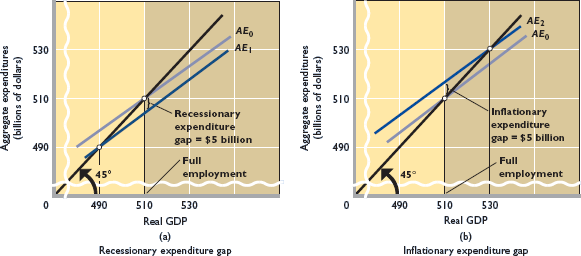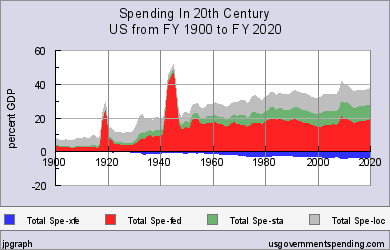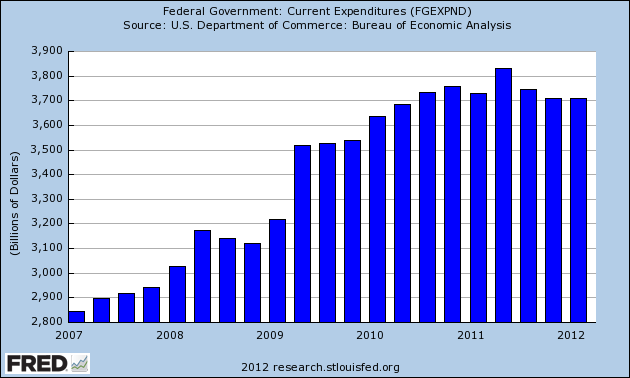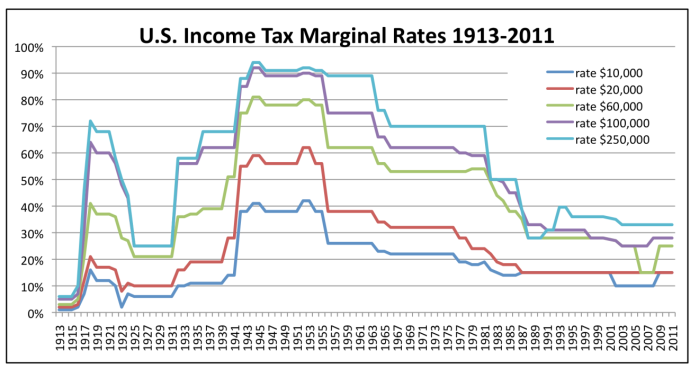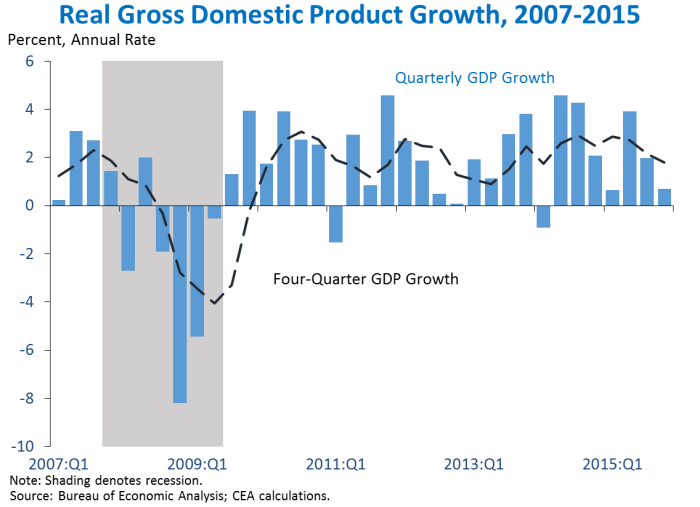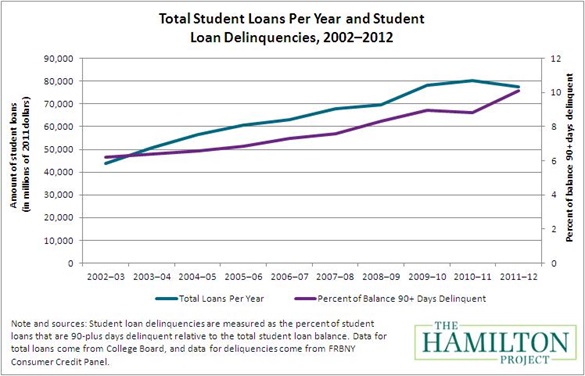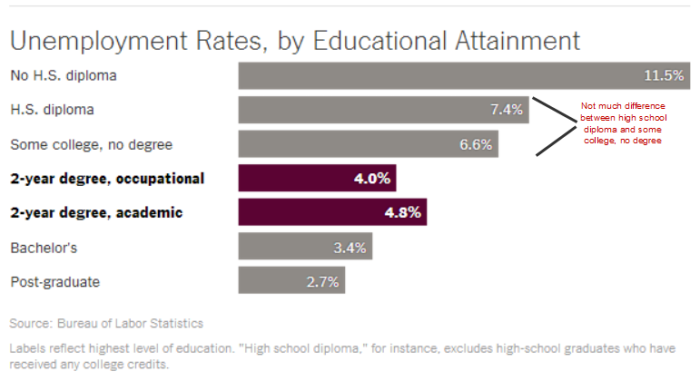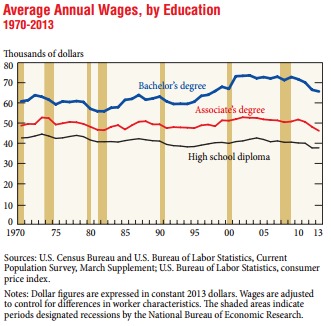Evaluation of the American Wind Industry
By Liam Sullivan
Wind Energy is a growing industry in the United States. In 2012, wind energy accounted for 42% of all new capacity and represented $25 billion in new investment (5). Although it has recently received more attention through the advent of fracking, natural gas accounted for a smaller percentage of new capacity than wind energy in 2012 at 31.5%. Wind energy already accounts for a significant sector of US energy production. The US currently has 61,110 Megawatts of installed wind project capacity and comprises 5.7% of total U.S. installed electric generating capacity (2). This paper will show that American wind energy firms will continue this trend of growth which will make the wind industry very competitive in the American energy industry. There are five reasons for this. First, unlike other forms of energy, wind energy creates an incredibly low amount of negative externalities. Conversion to wind energy would actually save the US precious water resources because of the nature of its energy creation process and would slow down the process of global warming that has been facilitated by other forms of energy through the emission of greenhouse gases. For the negative externalities that wind energy does create, most, such as noise pollution and the use of land by windmills, can be addressed through community dialogue and the creation of proper zoning laws. They do not need excessive environmental regulations such as the ones that are needed to prevent an oil or gas leak. Second, wind energy is more financially feasible than other forms of energy except for natural gas. Also, wind energy prices are less volatile which make it an attractive alternative for investors. Third, wind energy manufacturers exercise market power through product differentiation. This enables wind energy manufacturers to receive high profits which give them the ability to develop more efficient wind energy technologies. Fourth, a trend in the American wind energy industry indicates that some companies may merge with others due to economies of scale making them more efficient. Lastly, the Production Tax Credit has had a significant positive impact on the conduct of wind energy firms in the US and will continue to do so in the future due to its strong political support.
Wind Energy Firms Produce Fewer Negative Externalities Than Other Energy Producing Firms Making Them More Attractive to Consumers
The costs of negative externalities due to wind energy are very low. It produces no air or water pollution (3). With those efficiencies, wind energy can help address two major problems in the US: climate change and the growing shortage of fresh water. Wind energy does not produce harmful emissions like natural gas which will help slow down the process of global warming that unclean forms of energy have facilitated. It is estimated that by 2030, U.S. wind power will save nearly 30 trillion bottles of water (2). If wind energy continues to expand, and the demand for water in the US remains the same, this should shift the supply curve of water outward thereby decreasing the price of water in the US. This will help combat the issue of water shortages that have deeply affected dry regions in the US. In comparison, an average multi-stage hydraulic fracking job with current technology today uses somewhere between 2 and 5 million gallons of water which creates an opportunity cost when this water is used for fracking (6). This water could be used instead for public consumption which helps hydrate US citizens.
Nonetheless, wind energy does create some negative externalities. Wind turbines are made of large amounts of steel and other materials, such as composites, ductile iron, concrete, aluminum, copper and adhesives (4). These resources have to be extracted from the earth and the processes in which they are extracted and formed can harm the environment. According to estimates, wind turbine life-cycle global warming emissions are between 0.02 and 0.04 pounds of carbon dioxide equivalent per kilowatt-hour (7). Meanwhile, life-cycle global warming emissions for natural gas generated electricity are between 0.6 and 2 pounds of carbon dioxide equivalent per kilowatt-hour and estimates for coal-generated electricity are 1.4 and 3.6 pounds of carbon dioxide equivalent per kilowatt-hour. Therefore, although wind energy does produce global warming emissions, it produces significantly less than other forms of energy.
The National Wind Coordinating Committee (NWCC) has found that windmills negatively impact certain species of birds and bats. Peer-reviewed research found evidence of bird and bat deaths from collisions with wind turbines and due to changes in air pressure caused by the spinning turbines, as well as from habitat disruption. Despite their impact, the NWCC concluded that these impacts are relatively low and do not pose a threat to species populations (7). While wind turbines may harm birds and bats, studies suggest that off-shore wind mills may increase fish populations by acting as artificial reefs (7).
Windmills take up land which creates an opportunity cost since the land can be used for other productive purposes. The National Renewable Energy Laboratory of large wind facilities in the United States found that they use between 30 and 141 acres per megawatt of power output capacity (7). But land at wind facilities can be used simultaneously for other productive purposes including livestock grazing, agriculture, highways, and hiking trails. This minimizes the opportunity cost of wind facility land use.
Windmills also raise the issue of incompatible land use. Windmills create noise which is caused by the rotation of the blades or the windmill itself. Overall, sound levels depend on wind speed and turbine design. So far, government-sponsored studies in Canada and Australia have found that these issues do not adversely impact public health (7). There are recorded complaints of noise pollution from windmills so proper zoning laws should be implemented to ensure that residents are not negatively impacted by the development of a windmill. Windmill aesthetics create a similar issue. To some people, they are graceful sculptures; to others, they are eyesores that compromise the natural landscape. Community dialogue can be initiated to determine whether or not a windmill should be developed.
There is concern that windmills negatively impact real estate prices. The evidence that addresses this concern is mixed. A study that collected data from more than 50,000 home sales among 27 counties in nine states found that no statistical evidence that home values near turbines were affected in the post-construction or post-announcement/pre-construction periods (8). Meanwhile, a study of 11,331 property transactions over nine years in northern New York State found that nearby wind facilities significantly reduce property values in two of the three counties studied (9). Therefore, although on a national scale windmills do not significantly affect real estate prices in the US, there is still the possibility that they can and the issue should be addressed in the process of development of a windmill. In the case that a windmill does negatively impact the price of nearby real estate, owners of the real estate should somehow be compensated for their loss so that that the socially efficient amount of wind energy can be provided to American communities.
Financial Feasibility Makes Wind Energy Attractive to Consumers
Wind energy technology has progressed to the point where it makes financial sense for Americans to convert to its use. According to the Energy Information Administration, in 2013, land based wind energy is the third most affordable option for new electricity generation. The next most affordable options in successive order are conventional natural gas and advanced natural gas (4). The levelized cost of electricity is a good measure to use to compare the competiveness of different energy providers. It represents the per-megawatt hour cost (in real dollars) of building and operating a generating plant over an assumed financial life and duty cycle. Key inputs to calculating the levelized cost of electricity include capital costs, fuel costs, fixed and variable operations and maintenance costs, financing costs, and an assumed utilization rate for each plant type. For wind energy plants entering service in 2019, the levelized cost of electricity is 64.1 dollars per Megawatt hour in 2012 dollars while for all the different types of natural gas plants the average cost is 25.56 dollars per Megawatt hour (10). But natural gas does not have as much of a competitive edge over wind energy as it may seem. The average levelized price difference is much narrower when you look at land based wind energy and compare it to natural gas. The levelized price of off-shore wind energy raises the average levelized price of wind energy (4). The average levelized price of wind based energy for new land based windmills in 2011/2012 was around $40 which made these particular wind mills more competitive with natural gas providers (4).
Another one of the advantages that wind energy has over natural gas is price volatility. Windmills have minimal maintenance costs and they do not require fuel to operate which makes the price of wind energy production predictable (11). Today’s wind turbines have sophisticated electronic controls that allow continual adjustment of their output which help maintain price volatility. They can help grid operators stabilize the grid in response to unexpected operating conditions, like a power line or power plant outage (7).
Market Power Through Product Differentiation
The low price of natural gas is actually a cause of concern for economists. Industry experts fear that the prices are too low to be sustained because they do not provide an adequate income stream to producers (11). This means that natural gas producers are operating very close to making normal profits. If any crisis happens to any of the producers it will be hard for the natural gas producer to make up for the losses. In comparison, wind energy producers don’t face the same large risks such as gas leaks. In addition, windmill manufacturers benefit from product differentiation. There are different types of windmills for different types of wind environments and different types of windmills for the same environment. For example, Aris Wind is focused on producing a small-scale wind turbine which is suitable in low wind environments and therefore appropriate for generating power for schools, commercial buildings, and street lights (1). In contrast, GE produces very large wind turbines which are suitable for powering large-scale factories and homes (18). There is a market for each of the different types of windmills. They have patents for their technology which ensures that windmill manufacturers make large profits from the sale of their differentiated windmill. The rents that these manufacturers obtain from these sales allow the companies to create new windmill technologies which helps make windmills more efficient and thus more attractive to consumers of energy.
Possibility of Merging Between Wind Energy Companies due to Economies of Scale
Unlike other sources of energy such as natural gas, wind energy has no fuel cost and a much lower marginal operating cost than other resources that have fuel costs (17). This means that it costs wind energy firms much less and makes them more efficient to produce additional power than other energy firms such as coal and natural gas companies which face higher costs as they extract more fuel from the environment. This makes the wind energy industry an economy of scale. This trait has made wind energy firms competitive with other energy companies. But this is also causing wind energy firms to become competitive with each other. There is a high incentive for wind energy firms to engage in big wind turbine development projects such as the construction of wind farms because of their increasing returns to scale. To do so requires large amounts of capital and investment. The more efficient a firm is at accomplishing large scale wind turbine development projects, the more contracts and investment it will win over other firms. As of now, there are a high number of competitors in the global wind energy manufacturing market place and a high degree of merging activity is yet to be seen there. But wind energy firms tend to dominate by region with GE dominating most of the market in the US in 2012 as shown in the graph below (20). If there is any merging, it is likely that each region will be dominated by a different wind energy firm due to the specialization costs of operating in a specific region. Such merging would most likely be beneficial for the US.
Of the 6,816 megawatts of wind capacity installed in the U.S. in 2011, GE led with 29.4 percent (2,006 megawatts from 1,252 turbines). Vestas was close behind, with almost 29 percent (1,969 megawatts from 952 turbines). Siemens was again third, with just over 18 percent (1,233 megawatts, 534 turbines) (20). This shows that wind energy firms outside the US are competing with GE at an increasing rate. GE will have to step up production in order to prevent other firms from taking up its dominant position or else they will cut into GE’s wind energy revenues putting GE at risk of being acquired by another firm. Interestingly, in 2012, the average size of all turbines installed in the U.S. took its biggest jump since 2008, moving from 1.77 megawatts to 1.97 megawatts (20). This is another indication that the clients of wind energy firms are looking for large scale wind turbine projects which need large amounts of capital and investment. Such a change in tastes indicate that the wind industry is starting to become an economy of scale which may require merging.
The Production Tax Credit
The Production Tax Credit was begun with the Energy Policy Act of 1992. The Production Tax Credit (PTC) reduces the federal income taxes of qualified tax-paying owners of renewable energy projects based on the electrical output (measured in kilowatt-hours, or kWh) of grid-connected renewable energy facilities for the first ten years of commercial operation (12). This enables wind developers to sell wind electricity at a lower price to power purchasers. There are two requirements to qualify for the PTC. A tax-paying entity must own the generating asset and sell the electricity to an unrelated third party. Entities that do not pay taxes, such as publicly owned electric utilities, rural electric cooperatives and government bodies, may not take advantage of the PTC. Investor-owned utilities do qualify for the PTC. Firms can qualify for the PTC as long as the US Federal Government approves it to take effect. The US Federal Government usually approves it to take effect in one or two year intervals (13). The graph on the next page shows that in the past, the expiration of the PTC in certain years has caused annual wind capacity installation to dramatically decrease while the extension of the tax credit has caused it to increase (14).
The PTC certainly seems to have helped pick up the rate of annual wind capacity installation since 1997. But while wind energy firms have clearly benefited from the PTC, they are severely limited by the time constraints of the tax-credit. The planning and permitting process for new wind facilities can take up to two years or longer to complete. As a result, many renewable energy developers that depend on the PTC to improve a facility’s cost effectiveness may hesitate to start a new project due to the uncertainty that the credit will still be available to them when the project is completed (14). Therefore, if the duration of effect of the PTC were longer, the rate of annual wind capacity installation would be much higher. The lack of available information on the tax credits, prevents the wind energy sector from reaching its full economic potential because although a wind turbine construction may be feasible in the present, firms may decide to wait and hold off on constructing the project so that they can receive the potential benefits of the tax-credit. This creates an opportunity cost in the form of the wind energy that could have been produced earlier in time.
Although the previous graph indicates a dramatic decrease in annual installed wind capacity in 2013 due to the PTC expiration at the end of 2012, the PTC was extended at the last minute on January 2, 2013. This delayed the construction and investment in wind energy in 2013. By the end of 2013, there were a record 12,000 MW and 100 projects under construction (15). As a result the annual installed wind capacity that will be reported for 2014 will be much higher than it was in 2013. In fact, it will be the second largest increase ever in US annual installed wind capacity. It is likely that annual installed wind capacity rates will remain high in the near future since a change (and a year extension) to the PTC on December 31, 2013 included an adjustment of eligibility criteria that is expected to result in the qualification of projects that began construction in 2013 and maintain construction into 2014 and 2015; under current IRS guidance, projects that maintain construction into 2016 might also qualify (15). These extensions will allow more wind energy firms to offer wind energy at a competitive price to energy consumers in the near future.
Furthermore, it is likely that there will be continued support for the PTC because of a report released by the Department of Energy in 2008. The report examined a scenario where the U.S. reaches 20% wind electricity by 2030, concluding it is technically and economically feasible (16). This should provide strong encouragement for legislatures to continue to allow the PTC to be effective. Also, there is widespread political support for implementing energy independence legislation ever since the energy crises of the 1970s due to the peaking of oil production in major industrial nations (Germany, United States, Canada, etc.) and embargoes from other producers and the 1990 oil price shock which resulted from the Gulf War. To support the notion for widespread political support, The Gotham Research Group poll found 73 percent of registered voters support continuing the Production Tax Credit (PTC), including 63 percent of registered Republicans, 74 percent of Independents, and over 71 percent overall in all regions of the country (19). Therefore, politicians have a strong motivation to continue the effectiveness of the PTC for wind energy.
Conclusion
One of the most distinguishing features of wind energy is its capacity to minimize negative externalities which other forms of energy tend to create. Dirtier forms of energy create negative externalities which often go unaccounted for by the US government. Wind energy provides reassurance that such negative externalities are minimized. Even where negative externalities are created, they can easily be solved through community dialogue or zoning laws. The large supply of natural gas has made natural gas very cheap in comparison to wind energy. On the other hand, wind energy is more reliable which makes it attractive for consumers of energy to use to guarantee that they receive energy at a constant price. Furthermore, the structure of the wind energy market enables firms to receive higher profits than firms in the natural gas market which ensures that wind mill manufactures can make investments in wind mill technologies which continue to make wind energy more affordable. Due to the fact that the wind industry has traits that can identify it as an economy of scale, it is likely that wind energy firms will merge in the future which will have an efficient outcome due to the large amounts of investment and capital that need to be acquired to create a full functioning wind turbine project. The availability of the Production Tax Credit shows that the timing of wind turbine construction projects play an important part in their profit making ability for firms. American Wind energy firms need more reliable information on the duration of these tax credits so the growth of the wind energy sector can be steady and sustained.
Bibliography
1. Aris Wind. Aris Wind Sustainable Energy Solutions. http://ariswind.com/
Web. 25 November 2014
2. Wind Energy Foundation. Interesting Wind Energy Facts. http://www.windenergyfoundation.org/interesting-wind-energy-facts
Web. 25 November 2014.
3. National Geographic. Wind Power. http://environment.nationalgeographic.com/environment/global-warming/wind- power- profile/
Web. 25 November 2014.
4. American Wind Energy Association. Wind Energy Facts at a Glance. http://www.awea.org/Resources/Content.aspx?ItemNumber=5059
Web. 25 November 2014
5. American Wind Energy Association. 2012 US Wind Industry Market Update. http://awea.files.cms- plus.com/FileDownloads/pdfs/AWEA%20U.S.%20Wind%20Industr y%20Annual%20M arket%20Update%202012_1383058080720_3.pdf
Web. 25 November 2014
6. Blackmon, David. Forbes. Water For Fracking, In Context. http://www.forbes.com/sites/davidblackmon/2013/07/01/water-for-fracking-in- context/. Web. 25 November 25, 2014
7. Environmental Impacts of Wind Power. (n.d.). Retrieved November 25, 2014, from http://www.ucsusa.org/clean_energy/our-energy-choices/renewable- energy/environmental-impacts-wind-power.html#.VHTxs8np-Sp 8. http://emp.lbl.gov/publications/spatial-hedonic-analysis-effects-wind-energy- facilities-surrounding-property-values-uni
9. Heintzelman, M., & Tuttle, C. (2011). Values in the Wind: A Hedonic Analysis of Wind Power Facilities. Retrieved November 25, 2014, from http://iiccusa.org/wp- content/uploads/2011/03/Values-in-the-Wind.pdf10. http://www.eia.gov/forecasts/aeo/electricity_generation.cfm
11. Economics | Wind Energy Foundation. (n.d.). Retrieved November 25, 2014, from http://www.windenergyfoundation.org/about-wind-energy/economics
12. Goodward, Jenna, and Mariana Gonzalez. “Bottom Line on Renewable Energy Tax Credits.” Bottom Line on Renewable Energy Tax Credits. 1 Oct. 2010. Web. 14 Dec. 2014. <http://www.wri.org/publication/bottom-line-renewable-energy-tax-credits>.
13. “Federal Production Tax Credit for Wind Energy.” Federal Production Tax Credit for Wind Energy. Web. 14 Dec. 2014. <http://www.awea.org/Advocacy/content.aspx?ItemNumber=797>.
14. “Production Tax Credit for Renewable Energy.” Union of Concerned Scientists. Web. 14 Dec. 2014. <http://www.ucsusa.org/clean_energy/smart-energy-solutions/increase-renewables/production-tax-credit-for.html#.VI3uPmMkR8E>.
15. “Momentum Builds to Restore Wind Energy Tax Credit.” Environment News Service RSS. 14 Apr. 2014. Web. 14 Dec. 2014. <http://ens-newswire.com/2014/04/14/momentum-builds-to-restore-wind-energy-tax-credit/>.
16. “US Wind Industry: Market Update.” American Wind Energy Association, 1 May 2011. Web. 14 Dec. 2014. <http://www.awea.org/files/FileDownloads/pdfs/U-S-Wind-Industry-Market-Update-Factsheet-May-2011.pdf>.
17. “Data Show Wind Energy Reduces Energy Bills through Market Competition, Contradicting Exelon’s Claims.” Data Show Wind Energy Reduces Energy Bills through Market Competition, Contradicting Exelon’s Claims. 27 Mar. 2014. Web. 15 Dec. 2014. <http://www.awea.org/MediaCenter/pressrelease.aspx?ItemNumber=6265>.
18. “Wind Turbines – Wind Power | GE Energy.” GE Energy. Web. 15 Dec. 2014. <http://www.ge-energy.com/products_and_services/products/wind_turbines/index.jsp>.
19. Theele, Shauna. “New Poll Finds 73 Percent of Voters Support Crucial Tax Policy for Wind – Blog – Into the Wind.” New Poll Finds 73 Percent of Voters Support Crucial Tax Policy for Wind – Blog – Into the Wind. 25 Nov. 2014. Web. 15 Dec. 2014. <http://aweablog.org/blog/post/new-poll-finds-73-percent-of-voters-support-crucial-tax-policy-for-wind>.
20. Trabish, Herman. “GE Still Dominates US Wind Manufacturing but New Faces Are Emerging.” 1 May 2012. Web. 15 Dec. 2014. <http://www.greentechmedia.com/articles/read/ge-still-dominates-u.s.-wind-making-but-new-faces-are-emerging>.




